My daughter planted
Arbutus ‘Marina' in her Mediterranean-style courtyard, because it reminds her of madrone trees at summer camp. Every time I see her tree, I think of carving a seventh-grade girl’s initials on a madrone trunk while on a Boy Scout camping trip in another time and place. Madrone (or madrona) trees, native to the Pacific Coast from Southern California to British Columbia, have a wild beauty that appeals to the sentimental, romantic side of some of us, at least.
Arbutus 'Marina' is an evergreen hybrid of unknown origin, closely related to the native madrone. They share the family good looks: twisted, glossy reddish trunks with peeling bark, perky little flowers, even pretty fruit. But unlike the notoriously temperamental native madrone, which seems to die at the thought of garden-style watering or at the sight of a patio, 'Marina' fits nicely into garden situations and conditions.
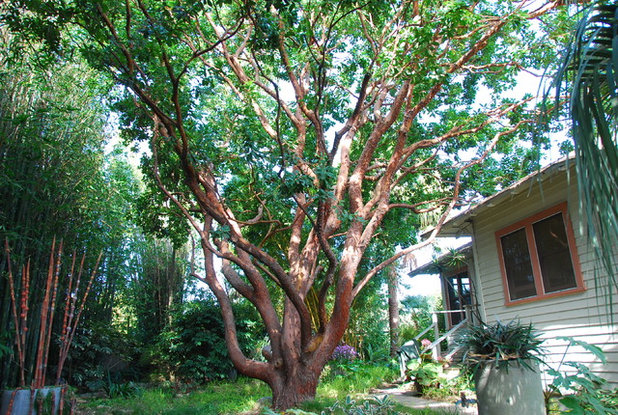
San Marcos Growers
Botanical name: Arbutus 'Marina'
USDA zones: 7 to 9 (find your zone)
Water requirement: Light
Light requirement: Full sun
Mature size: 25 feet tall and wide, but can grow to 50 feet
Special consideration: Drainage must be very good, or else root diseases may develop.
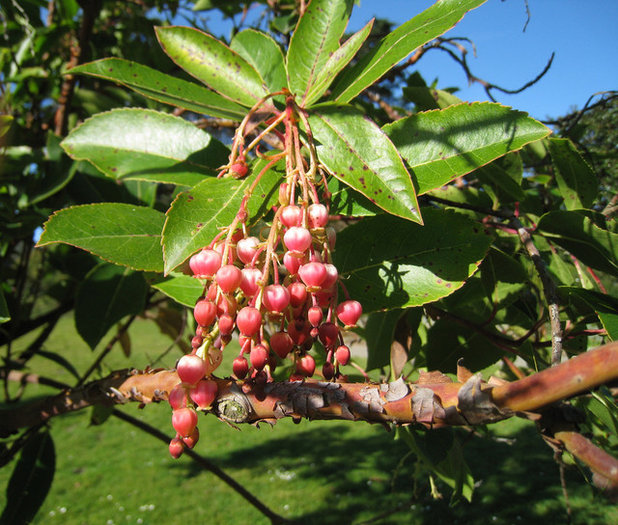 Distinguishing traits.
Distinguishing traits. Dainty clusters of pink flowers dangle among leathery green leaves, mainly in spring and fall. Even small branches display the peeling bark and glossy reddish new bark.
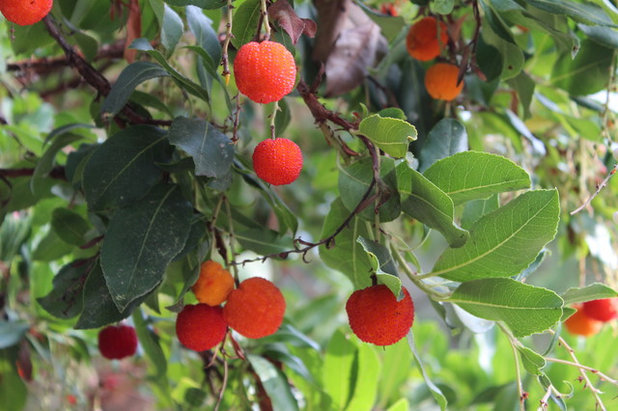
Eye-catching fruit that appears spring to fall resembles that of the closely related strawberry tree
(Arbutus unedo). It's edible if you are a fan of mealy, tasteless fruit. Why bother?
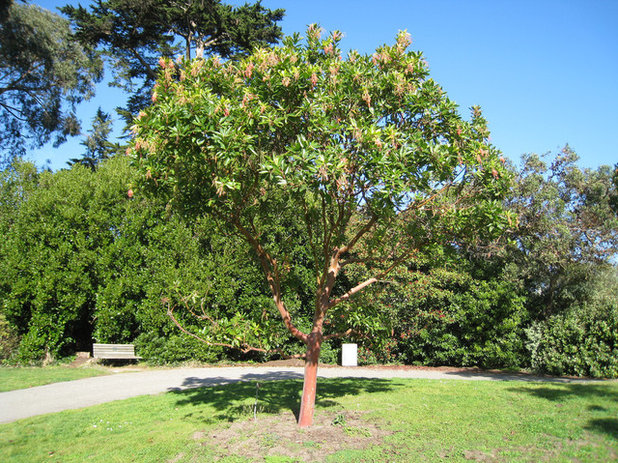 How to use it.
How to use it. Make 'Marina' a magnificent centerpiece of your patio, although it can create a mild mess with falling leaves, flowers, fruit and bark. It's more at home in a wilder, dry section of a garden. Make it a focal point rising up from a planting of mixed California natives such as manzanita, rhamnus and ceanothus. Keep lawns and frequent watering away. (Note that in this photo, the lawn is not allowed near the trunk.) Pruning away the lower branches has trained this tree to develop a round top.
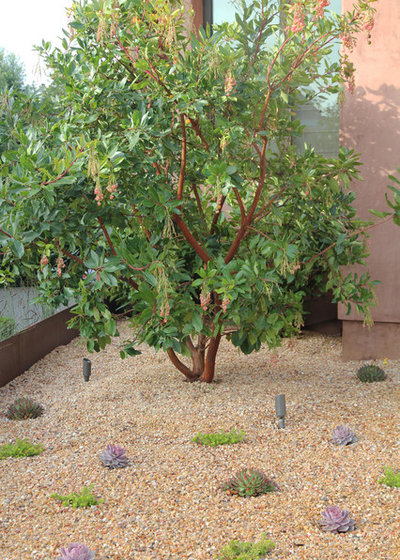
Boxleaf Design, Inc.
Multitrunk 'Marina', with lower branches left in place, has found a happy (dryish) home here with succulents and gravel mulch.
Growing tips. Before planting, make sure that the soil drainage is pretty good to excellent. Incorporate ground bark or other organic matter into the planting hole.





